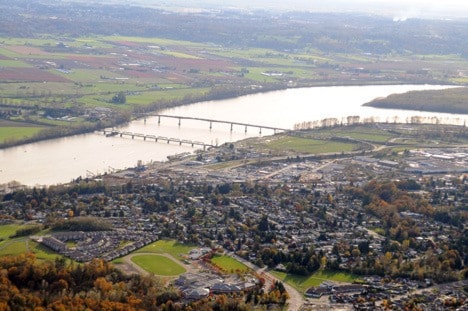Japan’s earthquake has prompted local emergency officials to plead with the public to ensure they are prepared for when a massive natural disaster hits this area.
Mission Fire/Rescue Chief Ian Fitzpatrick, who also serves as the local emergency preparedness coordinator, said residents should have items on hand and training to take care of themselves for at least 72 hours.
On top of having basic first aid knowledge and a kit of supplies that can sustain you and your family (see list below), everyone should know how to shut off the gas to their house. This can be done with a quarter-turn on the gas meter valve attached to the house.
While earthquakes and other natural disasters have not struck the Lower Mainland and Fraser Valley for decades — with the exception of the 2007 floods — many people don’t realize there is a fault line that runs up around the Stave Lake area, said Fitzpatrick.
The concern would be if an earthquake happened along the Juan de Fuca fault and triggered a movement in the local plate boundary and the effect this would have on both dams, he said.
BC Hydro has done modelling on potential earthquake damage, the chief added, and the rush of water if the dams burst would primarily cause hardship to Abbotsford.
Fitzpatrick said Mission’s Emergency Social Services would be one of the key groups involved after a natural disaster, and that the organization is always needing more volunteers. If you are interested in more information call 604-820-3793.
Emergency supply kit:
• First aid kit and instruction booklet.
• Shelter: a plastic tarp, a small tent, emergency (“space”) blankets, or even some large garbage bags.
• Water: at least four litres of water per person, per day, in tight-lidded, non-breakable containers. That’s at least 12 litres per person for a three-day supply.
• Keep a supply of water purification tablets in your emergency kit. Water also can be made safe to drink by using four drops of liquid household bleach in four and a half litres of clear water or 10 drops in four in a half litres of cloudy water. Replace stored tap water at least every six months.
• If the water is still running, fill a bathtub and other containers. Remember, there’s water available too in a hot water tank and toilet reservoir.
• Food: Keep a suply of non-perishable food handy, such as canned and dehydrated food, dried fruit and canned juices. Rotate periodically to keep them fresh. Remember a manual can opener.
• Flashlight and spare batteries. Keep the flashlight near your bed. Batteries should be separate in your kit.
• Battery AM/FM radio and spare batteries, stored separately in waterproof bags.
• Essential medication and supplies for infants, elderly persons and those with special needs. Keep at least a one-week supply in your emergency kit. Include copies of prescriptions for your medicine and glasses.
• Personal toiletry items: toilet tissue, soap, toothpaste, toothbrush, etc.
• Class ABC fire extinguisher. Keep it in a handy location in your home, after testing according to directions.
• Wrench (crescent or pipe) to turn off natural gas. Keep it in a handy place or in your emergency kit.
• Shoes- heavy enough to protect from broken glass and other debris. Keep them handy, wherever you are.
- Source: Provincial
Emergency Preparedness
